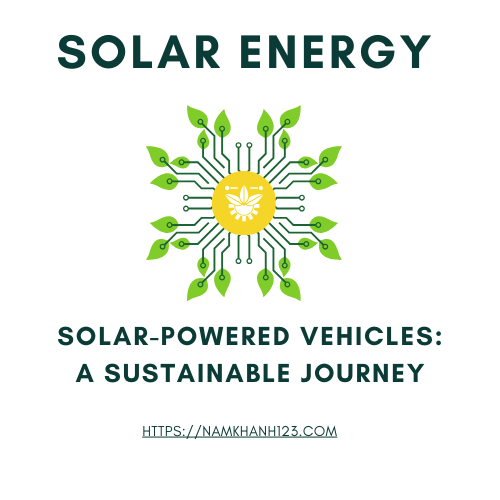In the quest for sustainable solutions to combat climate change and reduce our carbon footprint, solar-powered vehicles emerge as a beacon of hope. This transformative approach to transportation is not just about embracing renewable energy; it’s about redefining our relationship with mobility. Solar-powered vehicles represent a significant leap towards a greener, cleaner future, offering a glimpse into a world where our journeys do not come at the earth’s expense. This article delves into the evolution, benefits, and challenges of solar-powered vehicles, highlighting their role in our sustainable journey.
The concept of solar-powered vehicles harnesses the sun’s abundant energy, converting it into electrical power to propel vehicles forward. With advancements in photovoltaic (PV) technology, these vehicles are becoming increasingly efficient and viable. Solar panels mounted on the vehicle capture sunlight, which is then converted into electricity, either powering the vehicle directly or charging its battery for later use. This innovative use of solar energy marks a significant departure from reliance on fossil fuels, steering the transportation sector towards a more sustainable path.
The benefits of solar-powered vehicles extend far beyond their zero-emission operation. They offer a renewable, inexhaustible source of energy, significantly reducing the dependence on oil and other non-renewable resources. Moreover, solar vehicles have the potential to drastically lower operating costs, as sunlight is free and widely available. Their adoption could lead to a substantial decrease in air pollution, improving public health and mitigating the effects of climate change. Additionally, solar-powered vehicles can contribute to energy independence, reducing a nation’s vulnerability to oil price fluctuations and supply disruptions.
However, the road to widespread adoption of solar-powered vehicles is paved with challenges. One of the primary obstacles is the current limitation of solar panel efficiency and battery storage capacity. Although significant strides have been made, further advancements are needed to enhance the range and performance of these vehicles, making them competitive with conventional cars. The initial cost of solar-powered vehicles and the infrastructure required for their operation and maintenance also pose significant barriers. Furthermore, geographic and weather-related factors can affect the performance of solar vehicles, limiting their viability in certain regions and climates.
Despite these challenges, the future of solar-powered vehicles looks promising. Ongoing research and development are focused on improving PV efficiency, battery technology, and vehicle design. Governments and private sectors are beginning to recognize the potential of solar-powered transportation, offering incentives and support for research, development, and infrastructure projects. As public awareness and demand for sustainable transportation options increase, solar-powered vehicles are gaining traction, slowly but surely making their way onto the roads.
The path ahead for solar-powered vehicles is not just a technological challenge but also a societal and economic opportunity. As we look forward to a more sustainable future, the integration of these vehicles into the broader transportation ecosystem is essential. This means not only improving the vehicles themselves but also developing the infrastructure and regulatory framework to support them.
The potential impact of widespread adoption of solar-powered vehicles on urban planning and energy systems is profound. Cities could see a reduction in air and noise pollution, contributing to a healthier environment for their inhabitants. Moreover, the decentralization of energy production, with vehicles acting as mobile power sources, could enhance the resilience of the energy grid against outages and peak demands.
To realize these benefits, collaboration across various sectors is crucial. Automotive manufacturers, energy providers, government agencies, and consumers must work together to create a cohesive ecosystem that supports the adoption of solar-powered vehicles. This includes investment in charging and maintenance infrastructure, incentives for buyers and manufacturers, and public education campaigns to raise awareness of the benefits of solar mobility.
Furthermore, regulatory frameworks need to evolve to accommodate the unique aspects of solar-powered transportation. This could involve revising road use regulations, safety standards, and insurance models to reflect the new technology. Additionally, policies to encourage renewable energy integration and smart grid development will be critical to maximizing the environmental and economic benefits of solar-powered vehicles.
The journey towards a sustainable transportation future is complex and requires a multifaceted approach. However, the potential rewards—reduced environmental impact, enhanced energy security, and a healthier public sphere—are immense. As technology continues to advance and societal attitudes shift towards greater environmental consciousness, solar-powered vehicles are set to play a pivotal role in our sustainable journey.
In embracing solar-powered vehicles, we are not just adopting a new form of transportation; we are committing to a vision of the future that values sustainability, resilience, and innovation. This journey is not without its challenges, but with continued commitment and collaboration, it is a journey that we can make together, towards a brighter, cleaner future for all.



